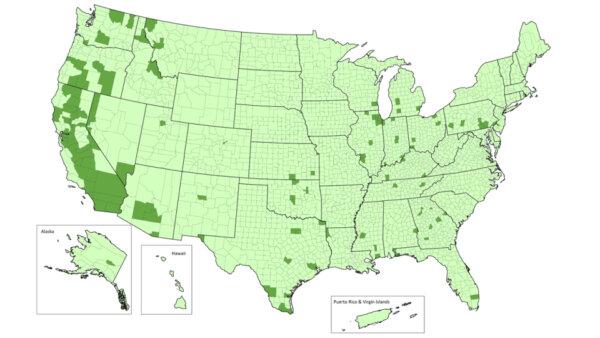Republican States Unite to Take Legal Action Against EPA for New Soot Regulation
The new standard for soot reduces the maximum allowable level of soot pollution from 12 micrograms to 9 micrograms per cubic meter of air.
A lawsuit challenging the stricter regulations against soot pollution set by the Environmental Protection Agency (EPA) is being led by attorneys general from Kentucky and West Virginia, along with 24 GOP states. They argue that these regulations could lead to more American companies outsourcing manufacturing jobs overseas due to the increased limits.
The EPA’s new standard, announced on Feb. 7, lowers the maximum allowable level of soot pollution from the previous 12 micrograms to 9 micrograms per cubic meter of air. The EPA estimates that this rule could save lives and prevent up to 4,500 premature deaths and 290,000 lost workdays by 2032.
Environmental advocates like Abigail Dillen, President of the non-profit Earthjustice, support the new standard, citing the health benefits of reducing soot pollution and its impact on diseases like heart disease and asthma. Similarly, Dr. Doris Browne, President of the National Medical Association, commended the standard as a crucial step in addressing the health impacts of soot pollution on vulnerable communities.
However, Kentucky Attorney General Russell Coleman, leading the lawsuit with West Virginia Attorney General Patrick Morrisey, believes that the new standard will negatively impact American families and businesses.
“The EPA’s new rule prioritizes President Joe Biden’s environmental agenda over the health of Kentuckians and the environment,” stated Mr. Coleman.
The EPA clarifies that the new standard focuses on lowering the annual standard for fine particulate matter to enhance overall air quality rather than imposing pollution controls on specific industries. The agency plans to use air sampling to identify areas not meeting the new standard.

States falling short of the standard have 18 months to create compliance plans. Failure to meet the new soot standard by 2032 may result in penalties. The EPA asserts that 99% of counties are on track to meet the revised annual standard by the given deadline. However, the agency does not mention the associated costs.
Critics argue that achieving the new standard may not be feasible. Several states, business groups, and the steel industry, including Ohio, Indiana, and West Virginia, have contested the standard, leading to its suspension in several states due to legal challenges.
Opponents of the regulation view the slightly lower soot standard as expensive and ineffective, pointing out that the United States already boasts stringent air quality standards. The U.S. Chamber of Commerce highlighted that a significant portion of particulate emissions originates from wildfires and deemed the new standard an inadequate solution.
Kentucky and West Virginia are spearheading the lawsuit, with the support of numerous other states like Alabama, Arkansas, Florida, Georgia, Idaho, Indiana, and more.
The Associated Press contributed to this report.






